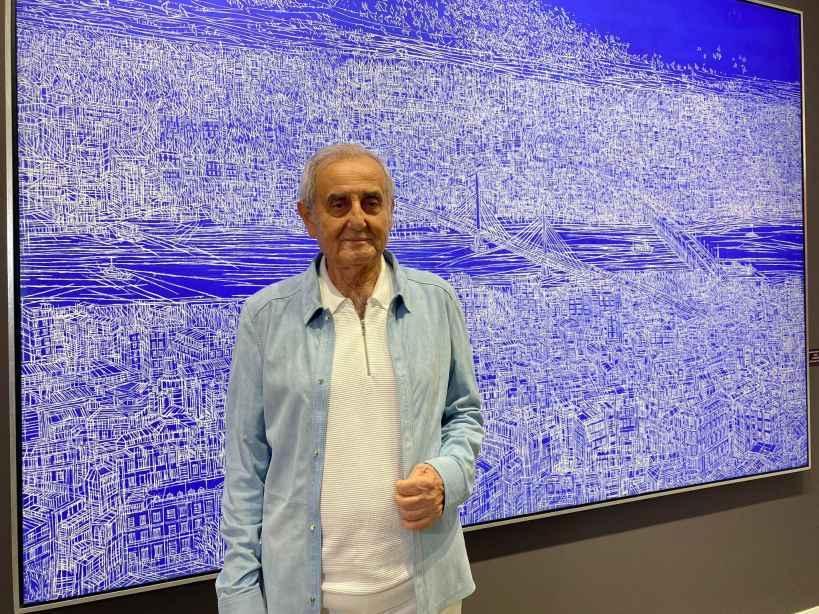Devrim Erbil’s ‘Selections’ on display in Istanbul
ISTANBUL

An exhibition titled “Selections” by Professor Devrim Erbil, one of the most important names in the history of Turkish painting, opened on Sept. 14 at Istanbul’s DG Art Project.
The exhibition, curated by Zeynep Öztürk, presents Erbil's 20-year works depicting the Bosphorus, the Golden Horn and the architectural structures of the city from different angles.
Speaking to the Demirören News Agency, Erbil said he does not stay away from details in his works. “Detail makes an object understandable. You can see it as a concrete mass without detail. But when it is created in detail, it is meaningful, effective and enjoyable. That's why I don't avoid details,” he added.
Erbil, who has opened many personal exhibitions at home and abroad, presents his works of oil paintings, giclee prints and carpets in this solo exhibition.
Dealing with Istanbul and the architectural structures of the city from different angles as the subject of his paintings, he also shows large canvas works, on which he depicts nature abstractions and Anatolian variations in the exhibition, as well as carpets, defined as the heritage of weaving culture in Türkiye to collectors.
The exhibition can be visited until Oct. 30.
Erbil stated that they aim to present the best works of the last 20-25 years in the exhibition and continued: “This is a new gallery. When I was suggested to open such an exhibition in this gallery, it was not possible to say no because Dursun Gündoğdu, who opened this gallery, was a friend and a person who had an important place in Turkish art as a gallerist. That's why we determined the theme of this exhibition as 'selections.' In other words, we aimed to present the important periods of the last 20-25 years for me and the best works of that period. Here I have abstract works before 2000.”
Talking about another feature of the exhibition, Erbil said, “There is a series called 'dual view' in which I present a new perspective. You see its examples in different places because ‘dual view’ is a new way of looking at art. When you look at something, you see what your eyes see. Art brings different interpretations of this. However, you cannot see the back of something when you look at its front. When you look from above, it gives you a different aesthetic pleasure. When you look from below, you see its plan. When you look at it both from above and from the front, when the two views overlap, it brings brand new emotions and perspectives. There are typical examples of the dual view in this exhibition.”
Stating that his woven carpet works are also included in the exhibition, Erbil said, “Tapestry, in Turkish, means illustrated carpet. In other words, it is the creation of the art of carpet by weaving it stitch by stitch, not printing. This was also true in the West, they had many famous artists, but Turkish artists were weaving traditional motifs. I transfer my own works to the language of weaving in a contemporary language. These are exhibited here.”
Stating that as a new thing in the exhibition, there are giclee prints, Erbil said, “In order to democratize art, it is necessary to show new examples of printing techniques. That's why my son Evrim Erbil uses a special machine called giclee and prints them with a printing technique called aluminum giclee. This technique has never been used in Türkiye. There are giclee prints and important works of my last 20 years in the exhibition.”
The curator of the exhibition, Öztürk said, “The exhibition includes compositions that Erbil has been working on for 20 years. Many of them are recent works. In fact, we had a hard time choosing these works because each of them is so beautiful. Erbil's Istanbul is truly a very flirty and enthusiastic work. We chose the works considering the contrast and nuance of colors. Each of them is enthusiastic and rhythmic, reflecting the coquetry of that woman. Why do I say woman? Because Istanbul is female for Erbil. He paints his works using the color and rhythm that suits this woman. It is a wonderful exhibition.”
















